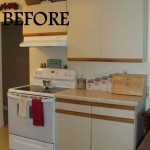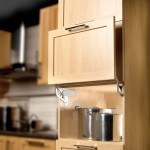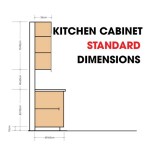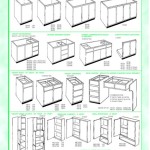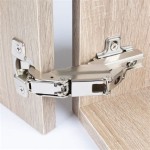How To Repair Plastic Covered Kitchen Cabinets
Plastic covered kitchen cabinets, often referred to as thermofoil or vinyl wrapped cabinets, are a popular choice due to their affordability and ease of cleaning. However, they are susceptible to damage, including peeling, bubbling, chipping, and discoloration. Understanding the common causes of these issues can help in preventing further damage and implementing effective repair strategies. This article provides a comprehensive guide on how to address these common problems and restore the appearance of plastic covered kitchen cabinets.
Before starting any repair, it is crucial to identify the type of damage and the extent of the problem. Minor issues like small chips or surface scratches can be addressed with simple touch-up methods. More significant damage, such as extensive peeling or large bubbles, may require more involved repair techniques or even replacement of the damaged section. Accurate assessment will inform the choice of materials and methods required for a successful repair.
Addressing Peeling Thermofoil
Peeling is one of the most frequent issues encountered with plastic covered cabinets. It occurs when the adhesive bond between the thermofoil and the underlying substrate weakens. This weakening is often caused by heat exposure from ovens, dishwashers, or direct sunlight. Moisture infiltration can also contribute to the degradation of the adhesive.
Preparation: The first step in repairing peeling thermofoil is thorough preparation. This involves cleaning the affected area with a mild detergent and water to remove any grease, dirt, or loose debris. Allow the cleaned area to dry completely before proceeding. Then carefully remove any loose or detached thermofoil using a sharp utility knife or a plastic scraper. Exercise caution to avoid damaging the surrounding intact material.
Re-Adhering Loose Thermofoil: For areas where the thermofoil is peeling but still largely intact, re-adhering it is the most cost-effective solution. This requires a high-quality contact adhesive specifically designed for bonding plastic to wood or MDF. Apply a thin, even layer of adhesive to both the back of the thermofoil and the exposed substrate. Allow the adhesive to become tacky, usually within a few minutes, as per the manufacturer's instructions. Carefully align the thermofoil with the underlying surface and press it firmly into place. Use a J-roller or a similar tool to apply even pressure and ensure a strong bond. Wipe away any excess adhesive immediately with a clean cloth dampened with mineral spirits.
Dealing with Bubbles: Bubbles often indicate trapped air or moisture between the thermofoil and the substrate. If the bubble is small, it may be possible to puncture it carefully with a fine needle or a razor blade. Then, inject a small amount of contact adhesive under the thermofoil and press it down firmly. For larger bubbles, gently slice open the bubble along its length with a sharp utility knife. Apply contact adhesive as described above, align the edges, and press firmly to re-adhere the thermofoil. Using a heat gun on a low setting can sometimes help to soften the thermofoil and improve adhesion, but this must be done with extreme caution to avoid melting or scorching the plastic.
Securing the Repair: After re-adhering the thermofoil, it’s crucial to secure the repair while the adhesive cures. Use painter's tape to hold the thermofoil in place, ensuring consistent pressure across the repaired area. Allow the adhesive to cure for the time recommended by the manufacturer, typically 24 to 48 hours, before removing the tape. Once the tape is removed, inspect the repair and address any remaining imperfections.
Repairing Chips and Scratches
Chips and scratches are common occurrences on kitchen cabinets, especially in high-traffic areas. These damages, while often superficial, can detract from the overall appearance of the cabinets. Addressing them promptly can prevent further damage and maintain the cabinets' aesthetic appeal.
Cleaning and Preparation: Before attempting any repair, thoroughly clean the affected area with a mild detergent and water. This removes any dirt, grease, or debris that could interfere with the repair process. Allow the area to dry completely before proceeding. Use a fine-grit sandpaper (220-grit or higher) to lightly sand the edges of the chip or scratch. This creates a smooth transition between the damaged area and the surrounding surface, improving the adhesion of the repair material. Be careful not to sand too aggressively, as this could damage the surrounding thermofoil.
Filling Chips and Scratches: For small chips and scratches, a color-matched repair crayon or wax filler is often sufficient. Select a crayon or filler that closely matches the color of the cabinet’s thermofoil. Apply the crayon or filler to the damaged area, pressing firmly to fill the chip or scratch completely. Use a plastic scraper or a putty knife to remove any excess material, ensuring a smooth, even surface. Wipe away any remaining residue with a clean, soft cloth. For deeper chips, a plastic wood filler or a specialized epoxy filler designed for plastics may be necessary. Apply the filler according to the manufacturer’s instructions, allowing it to dry completely. Once dry, sand the filled area smooth with fine-grit sandpaper, being careful not to scratch the surrounding thermofoil. Clean the area thoroughly to remove any sanding dust.
Color Matching and Touch-Up: Achieving a seamless repair requires accurate color matching. If a pre-mixed touch-up paint that perfectly matches the cabinet’s color is not available, custom color matching may be necessary. Take a sample of the cabinet door to a paint store, where they can use a spectrophotometer to analyze the color and create a custom-matched paint. Apply the touch-up paint to the repaired area using a fine-tipped brush or a cotton swab. Apply thin, even coats, allowing each coat to dry completely before applying the next. Blend the edges of the touch-up paint with the surrounding surface to create a seamless transition. A clear coat sealant can be applied over the touch-up paint to protect the repair and enhance its durability. Choose a sealant with a matte or satin finish to match the existing sheen of the cabinets.
Preventing Future Damage
Preventing damage to plastic covered kitchen cabinets is crucial for extending their lifespan and maintaining their appearance. Implementing preventive measures can significantly reduce the likelihood of common issues such as peeling, bubbling, and discoloration.
Controlling Heat and Humidity: Heat and humidity are primary factors contributing to the deterioration of thermofoil. Ensure adequate ventilation in the kitchen, especially when using ovens, stoves, and dishwashers. Use exhaust fans to remove excess heat and moisture from the air. Avoid placing heat-generating appliances directly adjacent to plastic covered cabinets. Install heat shields or barriers to protect the cabinets from direct heat exposure. Repair any leaks or water damage promptly to prevent moisture from seeping into the cabinet surfaces. Use a dehumidifier in humid environments to maintain a consistent level of humidity in the kitchen.
Proper Cleaning and Maintenance: Regular cleaning and maintenance are essential for preserving the integrity of plastic covered cabinets. Clean the cabinets regularly with a mild detergent and water. Avoid using abrasive cleaners, scouring pads, or harsh chemicals, as these can damage the thermofoil. Wipe up spills immediately to prevent staining or water damage. Periodically inspect the cabinets for signs of peeling, bubbling, or damage. Address any issues promptly to prevent them from escalating. Apply a sealant or protective coating to the cabinets to enhance their durability and resistance to damage.
Avoiding Physical Damage: Protect the cabinets from physical damage by implementing preventative measures. Use cabinet door bumpers or protectors to prevent doors from slamming and causing chips or dents. Avoid placing heavy objects on top of the cabinets, as this can cause warping or cracking. Use placemats and coasters to protect the cabinet surfaces from scratches and stains. Be careful when moving furniture or appliances near the cabinets to avoid accidental collisions. Consider installing protective films or wraps on high-traffic areas to prevent scratches and wear.
Repairing plastic covered kitchen cabinets requires careful assessment, proper preparation, and the use of appropriate materials and techniques. By understanding the common causes of damage and implementing effective repair strategies, it is possible to restore the appearance of these cabinets and extend their lifespan. Consistent maintenance and preventative measures are crucial for protecting the cabinets from future damage and maintaining their aesthetic appeal over time.

How Do You Paint Laminate Kitchen Cupboards When They Re Ling Hometalk

Plastic Coating Coming Loose From Kitchen Cupboards Hometalk

How To Repair And Paint Plastic Coated Melamine Cabinets Integrity Garage Doors Of Phoenix Tim Canfield Owner

Repair Loose Vinyl Cabinet Door Edges

My Laminate Drawers And Doors Are Ling Ing Help Hometalk

How To Repair And Paint Plastic Coated Melamine Cabinets Integrity Garage Doors Of Phoenix Tim Canfield Owner

How To Reface Cabinet Doors With Vinyl Wrap

Home Repair How To Fix Kitchen Cabinets Diy

Re Bubbling Or Ling Vinyl Wrap Kitchens With Spray Painting Wespray

How To Prepare And Paint Vinyl Covered Particleboard Cabinets Hunker

